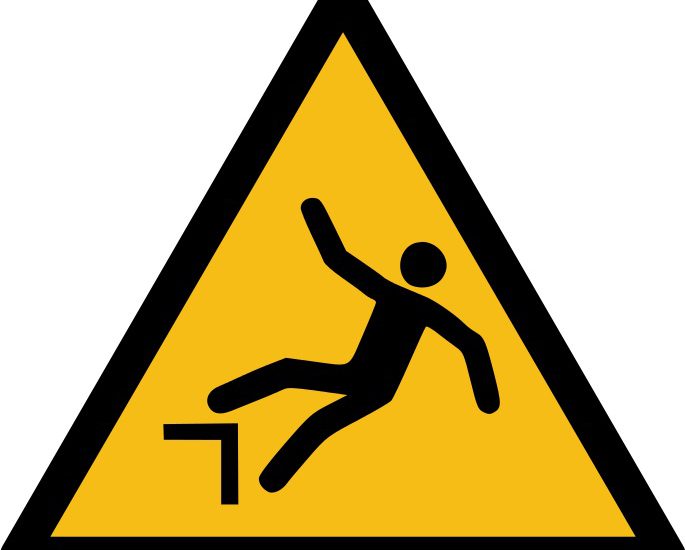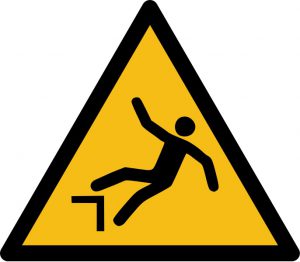- July 11, 2018
- Posted by: David Marshall
- Category: Management, Manufacturing, Measurement

You often hear about the costs of accidents and injuries to a company, and those are usually based on a specific incident or accident. For example, if an associate injures herself on the job and has to seek medical attention for $10,000, then the cost of that accident was $10,000.
You also hear about cost savings related to things like safety programs or special training. That a new training program reduced safety costs by X amount, or reduced the cost of lost productivity by X amount.
That doesn’t mean that every day someone doesn’t get injured means the company saved that much money. Otherwise, we would send everyone home and become millionaires as person after person didn’t become injured each day.
If someone is injured, there are costs of fixing them and making them whole, which means medical costs. There are costs of lost time, both for the injured person and the company who’s lost productivity. And, depending on the severity of the injury, it can even take a life.
This is why having a zero tolerance policy about safety not only protects the individual, which is the most important thing. It protects the integrity of the individual’s family unit, and the financial health of the organization. The biggest cost is not the direct cost, it’s the indirect cost. It’s not the cost of cleaning up the injury or the cost of repairing damaged equipment, it’s the indirect cost: the long-term effect it has on the family and the company.
How I Measured the Cost Benefit of Safety
 The way we measured the cost benefit at Robroy was to measure the costs to get people back to work, as per the State Worker’s Comp program. For example, California is one of the highest cost states for worker’s comp claims somewhere in the $25,000 range; in Texas, it’s in the range of $13,000. (Which shows how broken the system is.)
The way we measured the cost benefit at Robroy was to measure the costs to get people back to work, as per the State Worker’s Comp program. For example, California is one of the highest cost states for worker’s comp claims somewhere in the $25,000 range; in Texas, it’s in the range of $13,000. (Which shows how broken the system is.)
That means if someone got injured in Texas, it cost us roughly $13,000 to get them treated, rehabbed, and back on the job. And we were seeing a lot of Workers Comp claims every year.
So I elected to opt out of the Texas Workers Comp program and instituted my own health and safety program. It was company funded and supported with stop-loss insurance in case we had a real catastrophe that cost more than $150,000.
When I joined the organization, our workers comp costs were over $500,000 per year. When I opted out and we installed our own, the cost dropped to $10,000 – $12,000 per year. Our cost benefit was nearly $500,000.
We did it partly because the government just is not very good at managing anything. But more importantly, someone could claim they were injured on the job two years ago during work. Claiming an injury put them into the Workers Comp system. They would go to the doctors (who didn’t find anything) and claim they were in pain so they couldn’t work. The doctor would prescribe opioids, which the associate sometimes got addicted to, which meant that in some ways the system was causing people to become addicted to drugs.
And we had to pay all those costs, including the Workers Comp claim, on an injury that may have happened while the person was actually at another company. But we bore the brunt of those costs.
So we changed all that with our new system. In this system, the rules were simple. Rule number one, everyone had to have a pre-employment physical before joining the organization. That created a baseline in terms of fundamental health, and we could see how healthy you were at that moment.
There are certain degenerative diseases or conditions that, simply by aging, the conditions appear or get worse. Carpal tunnel syndrome and arthritis are like that — the older you get, the more likely you are to become arthritic. But if the associates had a baseline, and we saw things like early indications of arthritis, no one could claim this was an on the job injury a few years later.
In nearly every state, most good medical professionals don’t want to treat Workers Comp cases, because the fee schedule is so low they don’t make any money at it. But by being on our own system, the doctors were willing to see our associates as they needed it.
So rule number two, if anyone got hurt, they got the very best attention immediately. I did it because if someone got hurt on the job, we had a moral obligation to make them whole quickly. Plus, we didn’t want them to agitate the injury or make it worse by trying to work through it. If they could see a doctor right away, the progression of the injury stopped and they could heal faster and get back on the job sooner.
Rule number three, we created a zero tolerance policy for safety; it’s one of my four non-negotiables. If people did something stupid that could get them injured, they had to go. They didn’t get to repeat the behavior over and over until they got hurt.
By implementing those three rules, we cut significantly down on people getting injured because they were practicing safety at all times. If they did get hurt, they got immediate medical attention. And because we already knew people’s physical state when we hired them, we knew whether an injury was an actual injury or a two-year-old injury that finally flared up. And it saved us nearly half a million dollars in Workers Comp costs every year.
I’ve been a manufacturing executive, as well as a sales and marketing professional, for a few decades. Now I help companies turn around their own business. If you would like more information, please visit my website and connect with me on Twitter or LinkedIn.
Photo credit: Maxxl2 (Wikimedia Commons, Public Domain/CC0)

